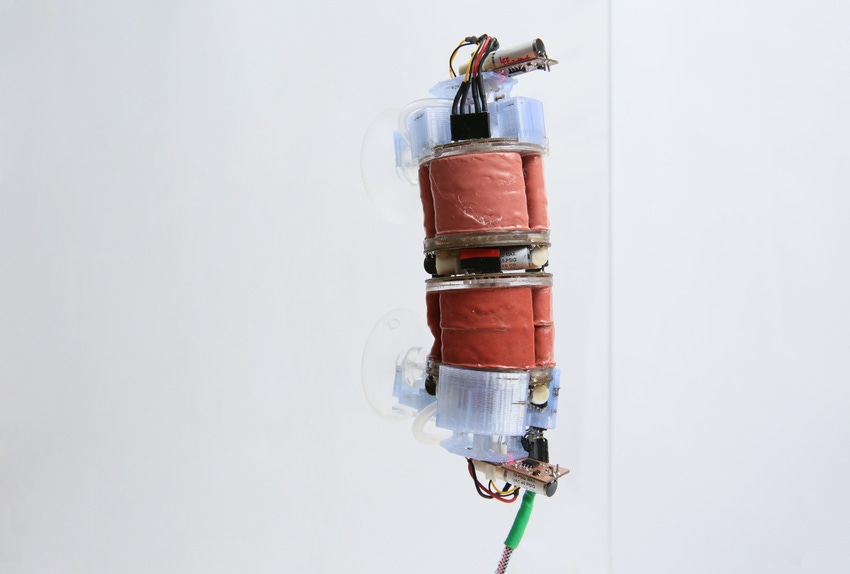New Soft Actuator Creates Robots that 'Breathe'
Scientists at the Swiss Federal Institute of Technology in Lausanne (EPFL) have developed a vacuum-powered, soft pneumatic actuator that can be modularly deployed for a variety of robotics applications.
September 7, 2017

Someday robots could be using the air we breathe for power. Scientists at the Swiss Federal Institute of Technology in Lausanne, the École Polytechnique Fédérale de Lausanne (EPFL), have developed a soft pneumatic actuator that is vacuum-powered. EPFL researchers say the new actuator is modular and versatile enough that it can be configured to allow robots to perform a wide range of tasks.
Where most actuators today function by injecting air into their components (positive pressure) EPFL's new vacuum-powered soft pneumatic actuator (V-SPA) works in the opposite fashion – having air sucked out of it (negative pressure). The researchers said this allows the actuators to be soft, easier to build, and also free of the safety hazards of standard actuators, which can explode under extreme conditions.
|
EPFL'S soft pneumatic actuator can be used to create modular robotics systems that utlilize vacuum power. (Image source: EPFL) |
“What's more is that our soft building blocks are designed to be plug-and-play, so ultimately we can assemble several types of robots from the same basic units,” Jamie Paik, EPFL scientists and lead researcher on the project said. “They can be reconfigured to perform different tasks like crawling, gripping canisters, and climbing a vertical wall.”
In a study published in Science Robotics, EPFL researchers built a module out of multiple V-SPA actuators that allowed for three degrees of freedom of movement and demonstrated its effectiveness in a variety of tasks including multimodal locomotion, object manipulation, stiffness tuning, as well as gripping and suction/adhesion to smooth surfaces. “Our results highlight the effectiveness of V-SPAs in providing core soft robot capabilities and facilitating the consolidation of previously disparate subsystems for actuation and various specialized tasks, conducive to improving the compact design efficiency of larger, more complex multifunctional soft robotic systems,” the study read.
There has been a growing body of research into soft components in the field of robots in recent years. The aim is to someday develop robots that use alternative sources of power, such as vacuums or chemical reactions, and are dexterous and flexible enough to perform tasks and enter environments that their rigid counterparts cannot. About this time last year a team of researchers from the Wyss Institute for Biologically Inspired Engineering at Harvard University developed Octobot, an untethered soft robot that propels itself using internal chemical reactions instead of electricity and motors.
“What we have is a fully functional robot which is entirely powered by vacuum, which has never been done before,” EPFL roboticist Matt Robertson said. “Previous work has shown individual components powered by vacuum, but never in a complete system.”
In a video from EPFL, Jamie Paik, lead researcher on the project, explains how the V-SPA can be used to create robotic systems. |
 ARM Technology Drives the Future. Join 4,000+ embedded systems specialists for three days of ARM® ecosystem immersion you can’t find anywhere else. ARM TechCon . Oct. 24-26, 2017 in Santa Clara, CA. Register here for the event, hosted by Design News ’ parent company UBM.
ARM Technology Drives the Future. Join 4,000+ embedded systems specialists for three days of ARM® ecosystem immersion you can’t find anywhere else. ARM TechCon . Oct. 24-26, 2017 in Santa Clara, CA. Register here for the event, hosted by Design News ’ parent company UBM.
Chris Wiltz is a senior editor at Design News covering emerging technologies including VR/AR, AI, and robotics.
About the Author(s)
You May Also Like


.jpg?width=300&auto=webp&quality=80&disable=upscale)

